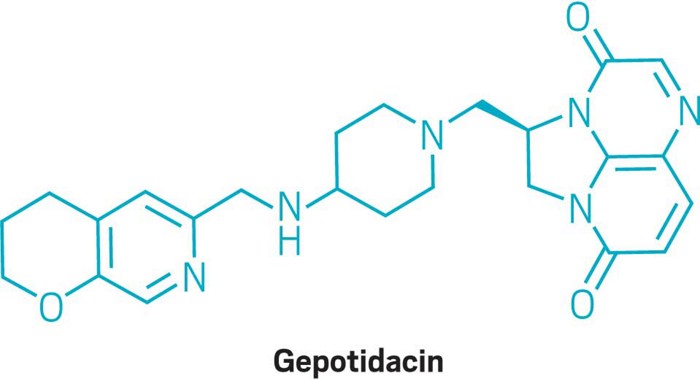Advertisement
Grab your lab coat. Let's get started
Welcome!
Welcome!
Create an account below to get 6 C&EN articles per month, receive newsletters and more - all free.
It seems this is your first time logging in online. Please enter the following information to continue.
As an ACS member you automatically get access to this site. All we need is few more details to create your reading experience.
Not you? Sign in with a different account.
Not you? Sign in with a different account.
ERROR 1
ERROR 1
ERROR 2
ERROR 2
ERROR 2
ERROR 2
ERROR 2
Password and Confirm password must match.
If you have an ACS member number, please enter it here so we can link this account to your membership. (optional)
ERROR 2
ACS values your privacy. By submitting your information, you are gaining access to C&EN and subscribing to our weekly newsletter. We use the information you provide to make your reading experience better, and we will never sell your data to third party members.
Global Health
How a cigarette maker quietly replaced menthol
A decades-old shaving product ingredient and a legal loophole helped R.J. Reynolds evade a state ban
by Bradley Van Paridon, special to C&EN
July 18, 2024
| A version of this story appeared in
Volume 102, Issue 22

When Massachusetts and California took steps to ban menthol cigarettes in 2020 and 2022, respectively, it took just days for new, nonmenthol cigarettes to appear in stores. The packaging for these products resembled that of popular menthol brands and used familiar descriptors like “cool” and “fresh.”
Sven-Eric Jordt, a biochemist at the Duke School of Medicine, believed that he knew how the tobacco companies modified their products to evade the new laws, and a chemical analysis proved him right. He and colleagues detected a molecule originally developed decades ago by the British shaving product company Wilkinson Sword. Known as WS-3, this synthetic coolant replaced menthol in the new cigarettes.
The team’s discovery was not only an analytical chemistry feat. It also revealed how a poorly conceived and worded tobacco law had allowed the well-funded cigarette maker R.J. Reynolds Tobacco to stay one step ahead of regulators.
Jordt has spent roughly 15 years studying menthol and synthetic coolants and their importance to the tobacco industry. “There’s no doubt that menthol increases the numbers of smokers,” he says.


Menthol occurs naturally in peppermint and is commonly added to products like toothpaste, chewing gum, cough medicine, and lotion. It has a minty odor and taste, and it produces a cooling sensation that is key to cold remedies such as vapor rubs and throat lozenges. It works by activating a receptor called TRPM8, which is found on nerve cells in parts of the body—including the skin, mouth, airways, and eyes—that encounter cold temperatures.
Menthol “activates this receptor and, even though the environment does not cool, we sense a cool sensation,” Jordt says. “That’s what makes menthol so pleasant.” In addition, menthol suppresses coughing—a useful trait for cold medicines but a harmful one in cigarettes.
“Animal studies have shown that it suppresses respiratory irritation when animals are exposed to smoke and increases nicotine levels in the blood,” Jordt says. In other words, people who smoke menthol cigarettes can inhale more smoke and receive more nicotine than those who smoke regular ones.
Some studies show that menthol also increases the amount of nicotine that the bloodstream can absorb. And there is a psychological component to menthol’s presence in cigarette smoke, Jordt says. “It serves as a very strong cue to smoke. Many menthol smokers like this minty smell, and when they smell that, they feel the urge to smoke.”
Tobacco companies are aware of menthol’s qualities and have used it since the 1920s. While smoking rates overall in the US have declined, the number of menthol smokers remains stable and has even increased in younger demographics.
Health-care professionals are cognizant of the powerful effect menthol has on smokers, and multiple studies show that menthol bans do reduce smoking rates. But in the US, a combination of politics and industry pressure has so far thwarted most efforts to regulate menthol.
In 2009, the US passed the Family Smoking Prevention and Tobacco Control Act, which banned flavored combustible tobacco products, but the industry fought to carve out an exemption for menthol.
“Menthol, then and even more now, accounted for somewhere in the neighborhood of 35% of total tobacco revenue,” says Phillip Gardiner, a public health researcher and founding member and cochair of the African American Tobacco Control Leadership Council.
“They were able to buy spokespersons, particularly Southern senators and other members of Congress, to support them in that effort,” Gardiner says. “They even got members of the tobacco control movement to agree that they would get to menthol later. And here we are 15 years later, and they haven’t got to it.”
Menthols are most popular among Black smokers, who were targeted for decades with marketing campaigns for menthol cigarettes. The industry continues to battle menthol legislation by courting Black activist groups and business associations that lend their voice and credibility.
“The tobacco industry, along with the National Action Network and the National Newspaper Publishers Association, met with the Biden administration and essentially argued that if you remove menthol from the marketplace, you would lose Black votes,” Gardiner says. In April, the Joe Biden administration again delayed plans to ban menthol cigarettes and provided no timeline for issuing a decision.
This inaction at the federal level, coupled with the rise of Juul and other vaping products in the late 2010s and early 2020s, led California and Massachusetts to enact bans on flavored electronic cigarettes and combustible menthol cigarettes. Tobacco companies like Reynolds were ready, though, and quickly unveiled the “nonmenthol” brands containing WS-3.
The history of WS-3 and other synthetic coolants dates to the 1970s, when Wilkinson Sword began altering menthol in search of analogs for its shaving products. It sought molecules that would provide the same cooling effect but without the skin and eye irritation sometimes associated with menthol.
Wilkinson Sword created several WS coolants. Cigarette manufacturers were immediately interested but resisted using them because of concerns that they would require costly safety testing. Two factors aided the compound’s appearance in California and Massachusetts after those states’ bans on menthol.
First, Reynolds had received a favorable response to a substantial equivalent review request that it made to the US Food and Drug Administration. This is a mechanism by which a company can argue that a new product is similar enough to an existing one to be marketed without further safety testing. “In 2020, the FDA determined that these so-called nonmenthol cigarettes with cooling agents in them are substantially equivalent to menthol cigarettes and basically thereby permitted the marketing of them,” Jordt says.
Second, both the Tobacco Control Act and the state legislation rely on a concept known as characterizing flavor.
The act set a “tobacco product standard” that prohibits a cigarette or any of its components from containing “as a constituent or additive any artificial or natural flavor (other than tobacco or menthol) or any herb or spice (including strawberry, grape, orange, clove, cinnamon, and vanilla) that is a characterizing flavor of the tobacco product or tobacco smoke.”
In other words, additives aren’t specifically banned as long as they don’t impart a characterizing flavor. But the law doesn’t define “characterizing flavor” or how it’s determined.
Massachusetts and California are further hampered by a preemption provision in the Tobacco Control Act that says states can enact laws more stringent than the federal law with regard to sales, marketing, and distribution but not ones that relate to tobacco product standards. States can legislate things like age requirements but not matters concerning the manufacturing of a cigarette, including flavors. Because the federal law doesn’t explain what it means by a characterizing flavor, which flavor additives are or aren’t allowed is unclear, and a loophole is created for WS-3 to sail through.
“It’s clear to me that, when the menthol and flavor bans in Massachusetts and California were put into effect through legislation, no one had any idea that there was this particular product waiting in the wings,” says Mark Gottlieb a lawyer with the Center for Public Health Litigation, a nonprofit public health law firm in Massachusetts. He assisted health officials in Chelsea, Massachusetts, when several retailers, supported by Reynolds, challenged fines they received for selling the nonmenthol cigarettes after the state ban.
“They brought along with them a top R.J. Reynolds scientist—their top flavor scientist—to offer testimony to the board of health in Chelsea that these scientifically cannot be a flavored product because they do not activate the taste or olfactory receptors, but only thermoreceptors,” Gottlieb says. He and his team countered with a broader definition of flavor, which the board of health ultimately agreed with.
“Taste isn’t just what your taste receptors are firing into your head. It’s the experience that is created by your brain through memory, through your perception, and it is a complicated process,” Gottlieb says. While the fines levied on the retailers were waived, the products were removed from stores in Chelsea.
Since the hearing, no other jurisdiction in Massachusetts has attempted to fine retailers for carrying the nonmenthol products. “What we haven’t seen yet is a replication of this enforcement action in other places where the product is sold—and it is still sold in other places in Massachusetts,” Gottlieb says.
Local health departments are deterred by the threat of legal action, according to Gottlieb. “If you’re going to issue a citation for a $500 fine and it’s going to end up costing you a couple of public hearings, a legal consultation, and the potential of defending a lawsuit brought by a major corporation with one of the top law firms in the country, maybe you just don’t bother,” he says.
Reynolds also has a lawsuit pending against the attorney general of California based on similar arguments regarding what constitutes characterizing flavor.
For Gardiner, fears of losing a legal battle against the tobacco industry shouldn’t dictate public health policy. “We can’t be basing our public health decisions on keeping a product that disproportionately kills people of color on the market so that we won’t lose a fight with the tobacco industry,” he says. “It’s a catch-22, so I think we have to move away from that logic.”
The postponed federal legislation updates the definition of characterizing flavor to include cooling sensations that, according to Jordt, could cover synthetic coolants. But he and others argue that a better approach would be legislation that considers a molecule’s chemical structure and function.
“Germany has a long list of cooling agents that are banned in cigarettes,” Jordt says. It includes the WS compounds and considers more broadly the basic structure of menthol and the chemical groups that are added to it. Belgium and the Netherlands consider function in their bans. “They basically said, ‘Any additive that can activate this TRPM8 receptor is banned,’ ” Jordt explains. Canada reversed this approach and created a list of approved additives that doesn’t include menthol or any other coolant.
Michael Chaiton, director of research at the Ontario Tobacco Research Unit, which studies the province’s tobacco strategy, says problems arise when lawmakers attempt to regulate things they don’t understand. A better appreciation for how tobacco additives interact with the body would help mitigate their harmful consequences without reliance on semantic arguments about flavor, aroma, and taste, he says.
“Most people don’t understand what they actually mean when talking about a characterizing flavor,” Chaiton says. “And if you’re trying to regulate chemistry, well, you better have a good sense of what that is.”
Bradley van Paridon is a Canadian freelance science writer and podcast producer based in Belgium.





Join the conversation
Contact the reporter
Submit a Letter to the Editor for publication
Engage with us on Twitter